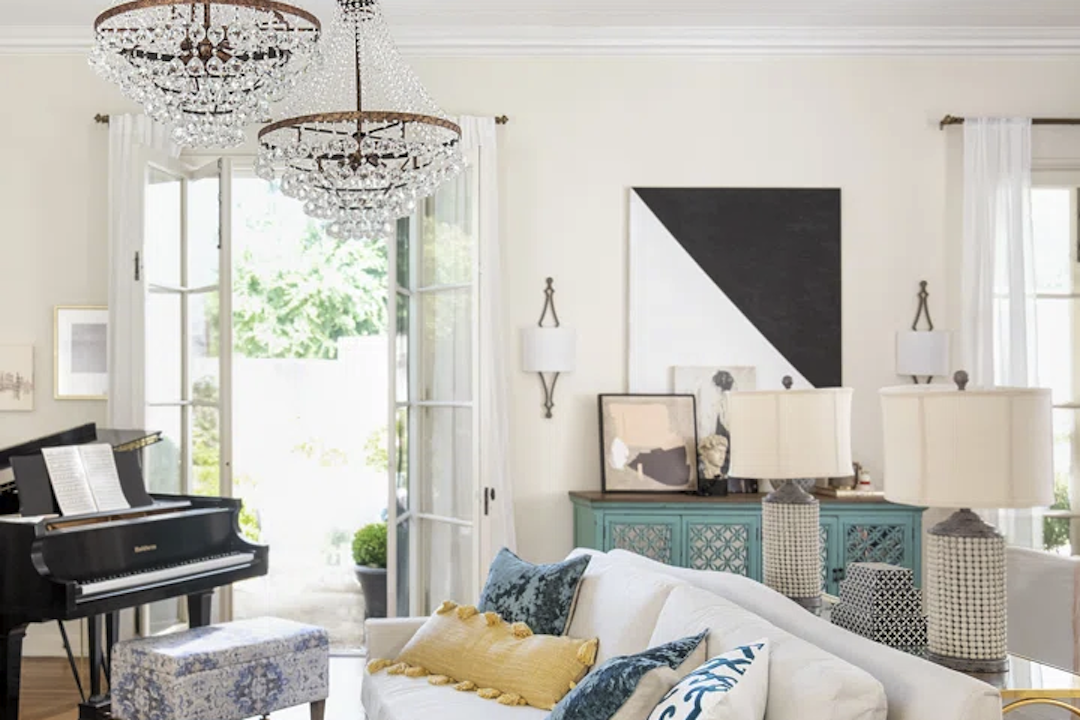Designing spaces for seniors is of utmost importance as it directly impacts their quality of life. As individuals age, their needs and preferences change, and it is crucial to create environments that cater to these changes. A well-designed space can enhance the overall well-being of seniors, promoting their independence, safety, and comfort. From incorporating mobility and accessibility features to creating a calming atmosphere, there are various aspects to consider when designing spaces for seniors. This article will delve into the importance of designing spaces for seniors and provide tips on how to create a senior-friendly environment.Rodovida
The Importance of Designing Spaces for Seniors: Enhancing Quality of Life
Designing spaces that cater to the needs of seniors is essential for enhancing their quality of life. As individuals age, they may face physical limitations and health conditions that require specific accommodations. A well-designed space can address these needs and promote independence and comfort.
One aspect to consider when designing spaces for seniors is mobility and accessibility. Seniors may have difficulty with mobility, such as walking or navigating stairs. It is important to create a space that allows for easy movement and accessibility. This can include features such as ramps, grab bars in bathrooms, wider doorways, and non-slip flooring.
Another important aspect is creating a safe and secure environment. Falls are a common concern among seniors, and designing a space that minimizes fall risks is crucial. This can involve strategies such as removing tripping hazards, installing proper lighting, and using non-slip mats or rugs.
Comfort and convenience are also key factors in designing spaces for seniors. Choosing the right furniture that provides adequate support and comfort is essential. Additionally, proper lighting can enhance visibility and reduce eye strain. Incorporating adjustable lighting options can allow seniors to customize the lighting to their preferences.
Understanding the Needs of Aging Adults: Designing for Mobility and Accessibility
When designing spaces for seniors, it is important to understand their specific mobility and accessibility needs. As individuals age, they may experience physical limitations that can affect their ability to move around and navigate their environment. Designing a space that accommodates these needs can greatly enhance their quality of life.
One important consideration is creating a barrier-free environment. This means removing any obstacles or barriers that may impede mobility. This can include widening doorways to accommodate wheelchairs or walkers, installing ramps instead of stairs, and ensuring that pathways are clear and free from clutter.
In bathrooms, it is crucial to incorporate features that promote safety and accessibility. Installing grab bars near toilets and in showers can provide support and stability for seniors. Non-slip flooring and shower seats can also help prevent falls.
In the kitchen, it is important to design a space that allows for easy access to appliances and storage. Lowering countertops and cabinets can make them more accessible for individuals with limited mobility. Installing pull-out shelves or drawers can also make it easier to reach items.
Creating a Safe and Secure Environment: Tips for Fall Prevention
Fall prevention is a critical aspect of designing spaces for seniors. Falls are a leading cause of injury among older adults, and creating a safe and secure environment can help minimize the risk of falls.
One important tip for fall prevention is removing tripping hazards. This includes ensuring that pathways are clear of clutter, removing loose rugs or mats, and securing loose cords or wires. It is also important to ensure that flooring is non-slip, especially in areas such as bathrooms and kitchens.
Proper lighting is another key factor in fall prevention. Adequate lighting can improve visibility and reduce the risk of tripping or misjudging steps. Installing motion-sensor lights in hallways or staircases can also be beneficial, as they automatically turn on when someone enters the area.
Installing grab bars in bathrooms and near stairs can provide additional support and stability for seniors. These bars should be securely mounted and able to bear the weight of an individual. It is important to consult with a professional to ensure proper installation.
Maximizing Comfort and Convenience: Choosing the Right Furniture and Lighting
Comfort and convenience are essential when designing spaces for seniors. Choosing the right furniture and lighting can greatly enhance their overall well-being and quality of life.
When selecting furniture, it is important to prioritize comfort and support. Seniors may have specific needs, such as extra cushioning or back support. Opting for furniture with adjustable features, such as recliners or lift chairs, can provide added comfort and convenience.
Lighting is another important aspect to consider. Proper lighting can improve visibility and reduce eye strain. Natural light is ideal, so it is important to maximize natural light sources by using sheer curtains or blinds that allow light to enter the space. Additionally, incorporating adjustable lighting options, such as dimmer switches or task lighting, can allow seniors to customize the lighting to their preferences.
Incorporating Technology: Smart Home Devices for Seniors
Incorporating technology into a senior-friendly space can provide numerous benefits. Smart home devices can enhance safety, convenience, and independence for seniors.
One example of a smart home device is a voice-activated assistant, such as Amazon Echo or Google Home. These devices can perform various tasks, such as setting reminders, playing music, or answering questions. Voice-activated assistants can be particularly beneficial for seniors with mobility limitations or cognitive impairments.
Smart thermostats are another useful technology for seniors. These devices allow for easy temperature control and can be programmed to adjust settings based on time of day or occupancy. This can help seniors maintain a comfortable living environment without having to manually adjust the thermostat.
Security systems with smart features, such as video doorbells or motion-sensor cameras, can provide added peace of mind for seniors living alone. These devices allow for remote monitoring and can send alerts to a smartphone or tablet if any suspicious activity is detected.
Personalizing the Space: Adding Sentimental Touches and Decor
Personalizing the space is an important aspect of designing for seniors. Adding sentimental touches and decor can create a sense of familiarity and comfort, promoting overall well-being.
One way to personalize the space is by displaying family photos or mementos. This can be done through photo frames, collages, or even digital photo frames that rotate through a collection of images. Seeing familiar faces and memories can evoke positive emotions and create a sense of belonging.
Incorporating favorite colors or patterns can also add a personal touch to the space. This can be done through accent pillows, throws, or artwork. Seniors may have specific preferences when it comes to colors or patterns, so it is important to involve them in the decision-making process.
Adding plants or flowers can also enhance the ambiance of the space and provide a connection to nature. Indoor plants not only add visual appeal but can also improve air quality and promote a sense of tranquility.
Enhancing Mental Health: Creating a Calming and Relaxing Atmosphere
Creating a calming and relaxing atmosphere is crucial for seniors’ mental health. As individuals age, they may experience increased stress or anxiety, and designing a space that promotes relaxation can greatly benefit their overall well-being.
One way to create a calming atmosphere is through color selection. Soft, neutral colors such as blues, greens, or earth tones can evoke a sense of tranquility. Avoiding bright or bold colors that may be overstimulating can help create a more serene environment.
Incorporating natural elements can also enhance the calming atmosphere. This can be done through the use of natural materials such as wood or stone, as well as incorporating plants or water features. These elements can create a connection to nature and promote relaxation.
Creating designated spaces for relaxation, such as a cozy reading nook or a meditation corner, can also contribute to a calming atmosphere. These spaces should be comfortable and free from distractions, allowing seniors to unwind and focus on self-care.
Designing for Socialization: Encouraging Interaction and Community
Designing a space that encourages socialization and community is important for seniors’ overall well-being. Social interaction plays a crucial role in mental and emotional health, and creating spaces that facilitate connection can greatly benefit seniors.
One way to encourage socialization is by incorporating communal areas within the living space. This can include a common room or lounge area where residents can gather and engage in activities together. Providing comfortable seating and ample space for conversation can promote interaction.
Designing outdoor spaces that encourage socialization is also important. This can include creating a patio or garden area where residents can gather, relax, or participate in outdoor activities. Providing seating options and shade can make these spaces more inviting and comfortable.
Incorporating shared amenities, such as a fitness center or game room, can also promote socialization among seniors. These spaces provide opportunities for residents to engage in physical activity or participate in group activities, fostering a sense of community.
Budget-Friendly Design Tips: Creating a Senior-Friendly Space on a Tight Budget
Designing a senior-friendly space does not have to break the bank. There are various budget-friendly design tips that can help create an environment that caters to the needs of seniors without exceeding a tight budget.
One cost-effective tip is to repurpose existing furniture or decor. Instead of purchasing new items, consider giving old furniture a fresh coat of paint or reupholstering it to match the new design aesthetic. This can give old pieces new life and save money in the process.
Shopping at thrift stores or consignment shops is another budget-friendly option. These stores often have a wide selection of furniture and decor at affordable prices. With a little creativity and DIY skills, it is possible to find unique and stylish pieces that fit within the budget.
Another tip is to prioritize essential items and invest in quality pieces. Instead of buying multiple inexpensive items, focus on purchasing a few high-quality items that will last longer. This can help save money in the long run and ensure that the space is equipped with durable and functional furniture.
Working with Professionals: Collaborating with Interior Designers and Contractors
Working with professionals, such as interior designers and contractors, can greatly benefit the design process when creating a senior-friendly space. These professionals have the expertise and knowledge to address specific needs and provide tailored solutions.
Interior designers can help create a cohesive design plan that takes into account the unique needs of seniors. They can assist with space planning, furniture selection, color coordination, and overall aesthetics. Their expertise can ensure that the space is not only functional but also visually appealing.
Contractors can assist with implementing necessary modifications or renovations to accommodate seniors’ needs. They can handle tasks such as installing grab bars, widening doorways, or modifying bathrooms to be more accessible. Working with contractors ensures that these modifications are done correctly and safely.
Collaborating with professionals also allows for a more efficient and streamlined design process. They have access to resources, materials, and suppliers that may not be readily available to individuals without professional connections. This can help save time and ensure that the project stays within budget.
Designing spaces for seniors is of utmost importance as it directly impacts their quality of life. By understanding their specific needs and preferences, it is possible to create environments that promote independence, safety, and comfort. From incorporating mobility and accessibility features to creating a calming atmosphere, there are various aspects to consider when designing spaces for seniors. By following the tips discussed in this article and working with professionals when needed, it is possible to create senior-friendly spaces that enhance overall well-being and quality of life.
If you’re looking for ideas on how to decorate an old people’s room, you might find this article on using art and wall decorations for room decoration interesting. It provides tips and inspiration on how to incorporate artwork and wall decor into the design of a room, creating a visually appealing and personalized space. Check it out here.

